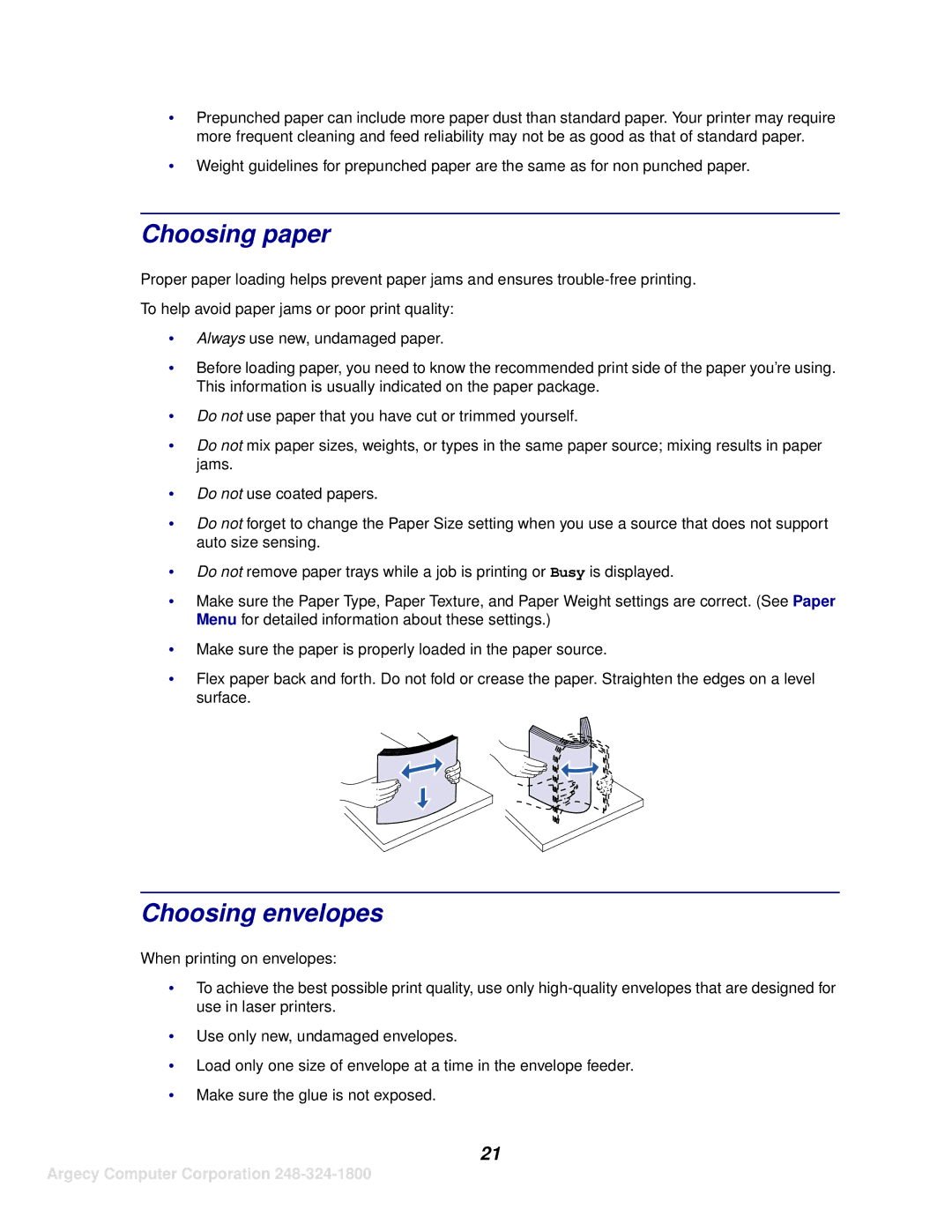
•Prepunched paper can include more paper dust than standard paper. Your printer may require more frequent cleaning and feed reliability may not be as good as that of standard paper.
•Weight guidelines for prepunched paper are the same as for non punched paper.
Choosing paper
Proper paper loading helps prevent paper jams and ensures
To help avoid paper jams or poor print quality:
•Always use new, undamaged paper.
•Before loading paper, you need to know the recommended print side of the paper you’re using. This information is usually indicated on the paper package.
•Do not use paper that you have cut or trimmed yourself.
•Do not mix paper sizes, weights, or types in the same paper source; mixing results in paper jams.
•Do not use coated papers.
•Do not forget to change the Paper Size setting when you use a source that does not support auto size sensing.
•Do not remove paper trays while a job is printing or Busy is displayed.
•Make sure the Paper Type, Paper Texture, and Paper Weight settings are correct. (See Paper Menu for detailed information about these settings.)
•Make sure the paper is properly loaded in the paper source.
•Flex paper back and forth. Do not fold or crease the paper. Straighten the edges on a level surface.
Choosing envelopes
When printing on envelopes:
•To achieve the best possible print quality, use only
•Use only new, undamaged envelopes.
•Load only one size of envelope at a time in the envelope feeder.
•Make sure the glue is not exposed.
21
